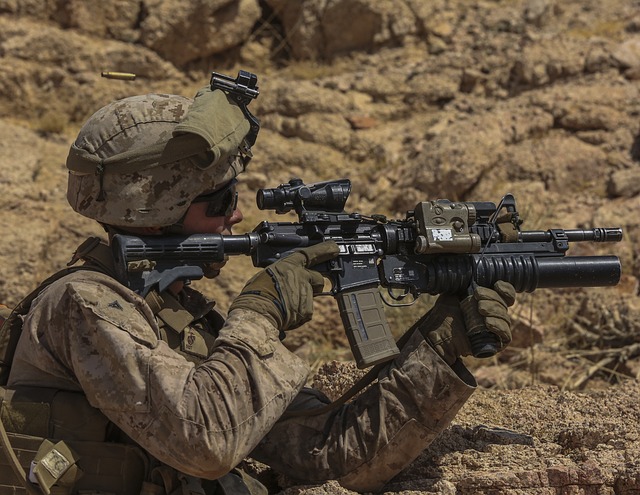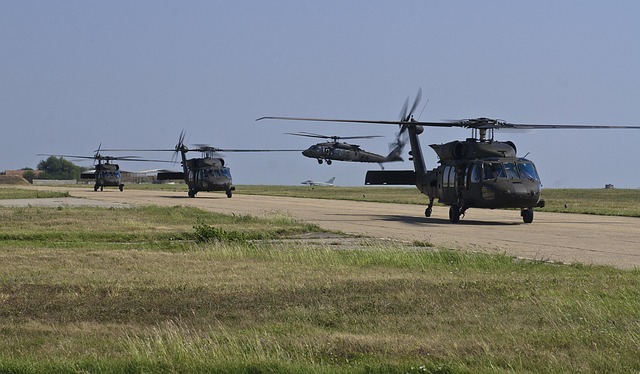The 82nd Airborne Division Flag, a powerful symbol since World War II, represents the division's courage and heritage in military parades and ceremonies. Its iconic design tells the story of key operations like D-Day and the Battle for Netherlands, inspiring patriotism and pride among current and former soldiers. The flag serves as a tangible link to the 82nd Airborne Division's rich past, fostering camaraderie and honoring its enduring legacy in combat and community service.
The 82nd Airborne Division Flag, a vibrant symbol of military heritage, plays a pivotal role in parades and ceremonies. This article delves into the historical significance of this iconic flag, tracing its origins and evolution as a marker of the 82nd Airborne Division. We explore its use in visual storytelling during parades, where it becomes a powerful narrative thread, honoring veterans and active-duty personnel. Additionally, we discuss the importance of preserving and displaying this historical artifact for future generations, examining care techniques and public engagement initiatives.
- Historical Significance of the 82nd Airborne Division Flag
- – Brief history and origin of the flag
- – Its role in identifying and symbolizing the 82nd Airborne Division
- Parade Tradition: A Visual Storytelling Platform
Historical Significance of the 82nd Airborne Division Flag

The 82nd Airborne Division Flag holds immense historical significance, reflecting the proud heritage and accomplishments of this renowned military unit. Since its inception during World War II, the flag has become an iconic symbol of courage, sacrifice, and camaraderie among paratroopers worldwide. It represents the division’s participation in numerous pivotal operations, including the D-Day landings and the Battle for Netherlands, where their bravery and precision jumps etched indelible marks on military history.
This distinctive flag, with its vibrant colors and meticulous design, has played a prominent role in parades and ceremonies, serving as a tangible connection to the division’s rich past. Paratroopers proudly carry it during celebrations and memorial events, paying homage to their ancestors who fought valiantly under its guidance. Its presence not only inspires awe but also educates new generations about the 82nd Airborne Division’s enduring legacy in military operations and community service.
– Brief history and origin of the flag

The 82nd Airborne Division Flag, a symbol of courage and precision, has been a staple in military parades and ceremonies since its inception. This iconic flag traces its origins back to World War II when the 82nd Airborne Division was formed as part of the United States Army. Designed to represent the division’s agility and bravery, the flag features striking colors and precise symbols that instantly evoke a sense of patriotism and military might.
The history of the 82nd Airborne Division Flag is intertwined with significant historical events. Adopted initially to rally troops during intense battles, it has since become a powerful representation of American military heritage. Its use in parades and ceremonies not only pays tribute to the division’s accomplishments but also serves as a reminder of the sacrifices made by those who served, fostering a spirit of camaraderie and national pride among participants and spectators alike.
– Its role in identifying and symbolizing the 82nd Airborne Division

The 82nd Airborne Division Flag plays a pivotal role in identifying and symbolizing the renowned 82nd Airborne Division within military parades and ceremonies. This iconic banner, with its distinctive design and vibrant colors, serves as a powerful representation of the division’s rich history, bravery, and dedication to service. Each element of the flag holds significance—the bold red, white, and blue hues evoke the spirit of patriotism and courage, while the intricate designs and symbols narrate tales of daring missions and historical victories.
When unfurled during parades or ceremonial events, the 82nd Airborne Division Flag becomes a focal point, capturing the attention of spectators and instilling pride among current and former members of the division. It acts as a unifying symbol, connecting the past, present, and future soldiers under its banner. The flag’s presence not only honors the achievements of the 82nd Airborne but also serves as a constant reminder of their unwavering commitment to protecting our nation and defending freedom around the globe.
Parade Tradition: A Visual Storytelling Platform

Parades have long served as vibrant platforms for storytelling, and the 82nd Airborne Division Flag is a prime example of this visual tradition. Carried by proud members of the military, this flag isn’t just a symbol; it narrates the history, valor, and sacrifices of the division it represents. In parades and ceremonies, the flag becomes a living tapestry, weaving together tales of bravery from battles past, inspiring those who bear witness.
Each detail on the flag—from the distinctive unit insignia to the colors that represent courage and sacrifice—contributes to this visual narrative. As the 82nd Airborne Division Flag marches through streets or arenas, it transports spectators back in time, allowing them to connect with the division’s journey and its enduring legacy. This tradition not only honors the past but also reinforces the importance of unity, pride, and remembrance within military communities.
The 82nd Airborne Division Flag, with its rich history and symbolic significance, has become an iconic presence in parades and ceremonies. As a powerful visual storytelling tool, it not only represents the proud heritage of the 82nd Airborne Division but also inspires awe and reverence among spectators. Its prominent use in these events highlights the enduring legacy and valor of the division, ensuring that its stories and sacrifices are remembered and celebrated for generations to come.
